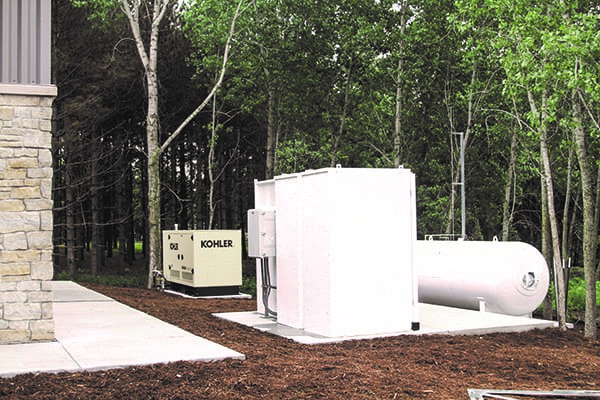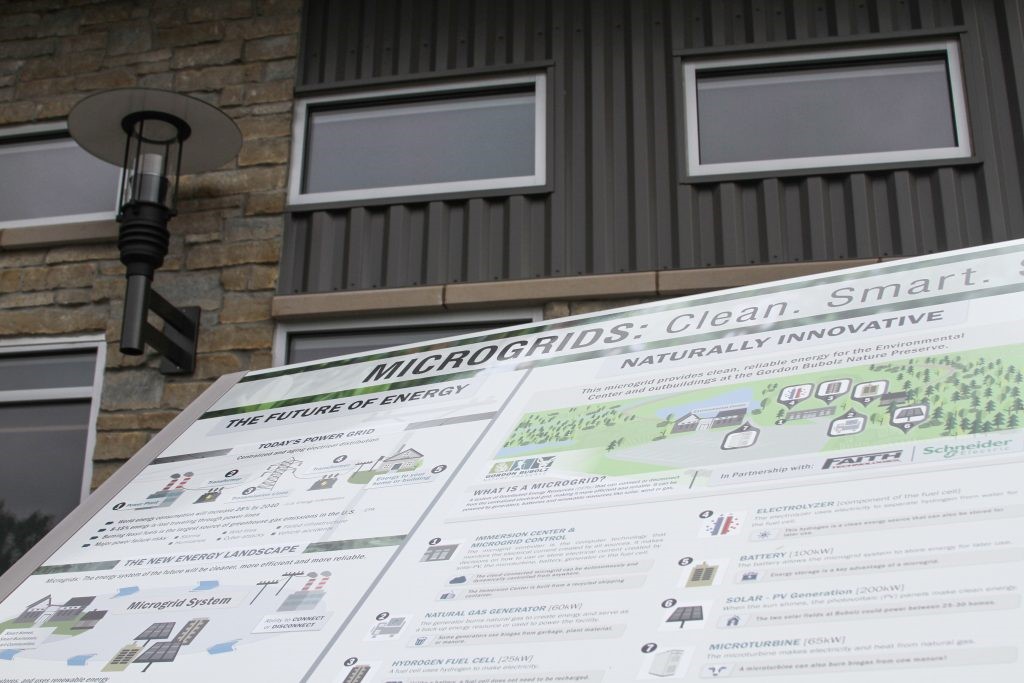http://www.bubolzpreserve.org/education/microgrid/
A Real-World Laboratory:
This fully integrated microgrid provides a test platform for developing various optimization routines. In the real world, demand and supply conditions are constantly changing. After all, this is Wisconsin! The demand on the microgrid is based on the energy needs of the nature center along with exterior lighting and electric vehicle charging stations. These demands vary based on factors such as weather conditions, time of day, types of events, and the number of people on the site. With each scenario, there is an optimum combination of system components needed to meet the demands of the facility.
For example, on a cloudy winter day the best option may be to run the Altergy Hydrogen Fuel Cell to compensate for the lack of solar energy. However, on a bright summer day it may be better to store excess solar power in the Tesla Battery System for future energy demands.
Obviously, once the solar system is installed, it becomes the most economical and environmentally responsible source of energy. The perfect scenario for this microgrid occurs when the Tesla Battery System is fully charged and the solar panels are providing all of the energy needed for the facility.
If you look at the system from a base load/trim control strategy, the base supply system consists of the solar panels and the Tesla Battery. Variations in demand, due to building loads, weather conditions and time of day are managed by running the “trim” system components, which consist of the Altergy Hydrogen Fuel Cell, Vergent Power Solutions Micro-Turbine, and Kohler Generator.
Using the trim system components results in higher energy costs because natural gas must be purchased and converted into usable energy. In addition, the trim system consists of more mechanically intensive components, resulting in higher maintenance costs relative to the solar system.

https://cdn.powermag.com/wp-content/uploads/2018/07/figure-2-img_8074_web.jpg
System Control:
Control and optimization of the system is managed by the EcoStruxure Microgrid Advisor from Schneider Electric. Over time, the system learns which combination of components works best for each scenario and may even forecast future settings based on hourly weather predictions. This technology gives the center greater control over energy usage and attainment of energy emission reduction goals.

https://microgridknowledge.com/wp-content/uploads/2018/06/gordon-3-1024x683.jpg
Environmental Impact:
The microgrid supports the nature preserve’s mission by reducing its direct and indirect greenhouse gas emissions through optimization of energy consumption, production, and/or storage.
Economics of the System:
The microgrid system was installed as the building was constructed. As a result, there is no way to compare historical energy consumption data relative to the performance of the building and/or microgrid under various load and weather conditions.
However, as we elaborated above, this microgrid is a real-world laboratory, which makes it easy to compare system performance. Sub-metering of the major energy supply components allows for the development and confirmation of energy and cost savings strategies.
While the energy efficiency potentials of this microgrid and others like it show amazing potential, it would be foolish to install these high-end system components on an
older facility with inefficient lighting and heating systems, minimal insulation, and bad windows. Issues like these must first be resolved since greater cost savings can be attained by fixing energy efficiency issues before investing in high performance systems.
For additional information about this project please contact:
Fox Cities Environmental Learning Campus at Bubolz Nature Preserve
4815 N Lynndale Drive
Appleton, WI 54913
920.731.6041
http://www.bubolzpreserve.org/
LaMonte Wilder, President Masters’ Academy LLC
800-390-4366
MastersAcademy.Biz
Lamonte.Wilder@MastersAcademy.Biz
Continued thanks to:
The Wisconsin Association of Energy Engineers (WAEE) Chapter for providing up-to-date information about real world applications of energy efficiency technology at their monthly chapter meetings. Please visit the WAEE webpage for dates, times, locations, and topics.